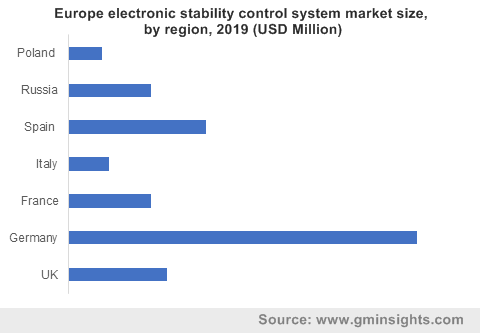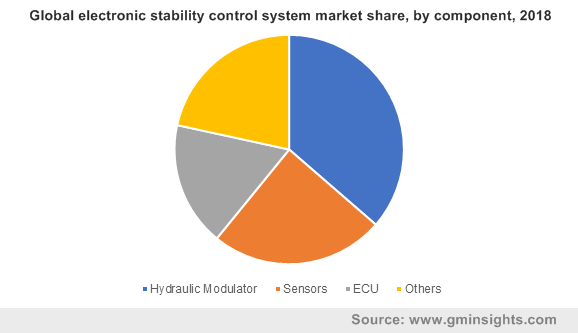Home > Automotive > Automotive Technology > Electronic Stability Control System Market
Electronic Stability Control System Market Analysis
- Report ID: GMI4200
- Published Date: Jul 2019
- Report Format: PDF
Electronic Stability Control System Market Analysis
Passenger cars will contribute to a larger share in the automotive stability control system market. Electronic systems and features have become prominent in passenger cars owing to the increasing demand for safety in developed nations particularly in North America and Europe. The passenger cars sales have also increased over the years in developing nations, further adding to the demand. According to the European Automobile Manufacturers Association, more than 80 million passenger cars were produced globally in 2017.
The growth in the purchasing power of people and implementation of automotive stability enhancement systems in a greater number of cars at least as an option is expected to provide high growth potential in the passenger cars segment. Furthermore, the growing safety standards in developing economies will have considerable influence on market growth. For instance, in February 2017, the Indian Ministry of Road Transport & Highways introduced a new regulation for making anti-lock braking system mandatory for all new cars sold in the country from April 2019, which will increase the implementation of stability systems in passenger cars.
The components used in electronic stability control systems are hydraulic unit and sensors such as steering angle sensor, wheel speed sensor, lateral acceleration sensor, and others. The sensors are a vital part of the stability control system and measure parameters such as speed and direction of rotation of the wheel, brake force required to prevent skidding of vehicle, and others. The wheel sensor offered by Robert Bosch uses Hall technology for generating an alternate voltage, which creates a digital output signal. This sensor is capable of detecting very low wheel speed such as 0.1 km/h. The component suppliers in the electronic stability control system market are focusing on developing more reliable and durable products, which can be easily integrated with other safety systems of the vehicle.

Europe is expected to be one of the key regions owing to strong advancements in the automotive industry and the presence of a large number of premium car manufacturers including BMW, Audi, Mercedes-Benz, Maserati, etc. According to the European Automotive Manufacturers Association, the European automotive industry invests around USD 64.24 billion annually in research & development. A strong focus on innovation has enabled the implementation of a greater number of features in automobiles by European manufacturers, Europe also has mandatory regulation for the implementation of an electronic stability control system in cars and light commercial vehicles, ensuring the demand for the electronic stability control market.
Asia Pacific is another rapidly growing region with over 40% of share in the vehicle assist system market. The growing economic developments in the region resulted in the growth of the automotive industry. According to the International Organization of Motor Vehicle Manufacturers, in 2018, Thailand and Malaysia witnessed 9% and 12.2% growth in automotive production respectively. Manufacturers are implementing stability control features in lower-priced mid-range cars, such as Maruti Suzuki Ciaz, Ford Figo Titanium, Datsun Go+, Hyundai Venue, and Volkswagen Polo. In September 2018, the Ministry of Road Transport and Highways of India announced that electronic stability control systems will be made mandatory on Indian cars between 2022 to 2023. In October 2017, 12 major Chinese car brands announced that they will be implementing electronic stability control systems on all new models from January 2018.

